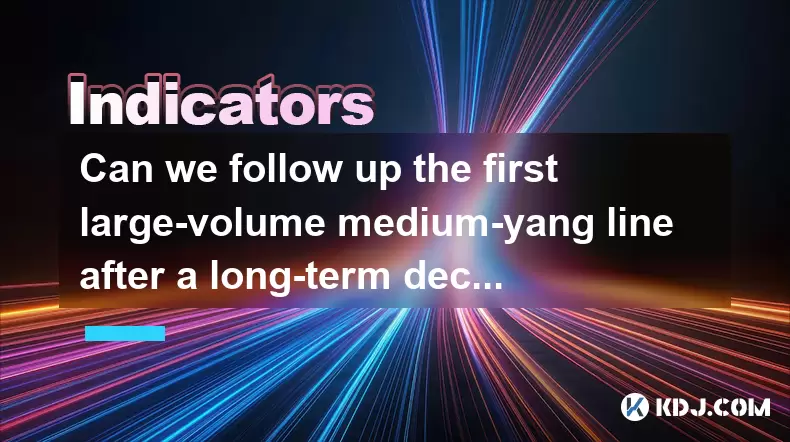-
 Bitcoin
Bitcoin $108,092.5658
-0.99% -
 Ethereum
Ethereum $2,546.4530
-1.12% -
 Tether USDt
Tether USDt $1.0000
0.01% -
 XRP
XRP $2.2676
0.12% -
 BNB
BNB $659.1616
-0.30% -
 Solana
Solana $148.8297
-1.97% -
 USDC
USDC $1.0000
0.02% -
 TRON
TRON $0.2874
-0.30% -
 Dogecoin
Dogecoin $0.1676
-3.64% -
 Cardano
Cardano $0.5765
-1.73% -
 Hyperliquid
Hyperliquid $37.2069
-6.18% -
 Bitcoin Cash
Bitcoin Cash $497.9918
-0.10% -
 Sui
Sui $2.8427
-2.26% -
 Chainlink
Chainlink $13.2689
-2.06% -
 UNUS SED LEO
UNUS SED LEO $9.0541
0.15% -
 Stellar
Stellar $0.2487
-0.92% -
 Avalanche
Avalanche $17.7710
-3.09% -
 Shiba Inu
Shiba Inu $0.0...01167
-1.28% -
 Toncoin
Toncoin $2.7488
-2.80% -
 Hedera
Hedera $0.1559
-2.28% -
 Litecoin
Litecoin $85.8945
-2.48% -
 Monero
Monero $316.0985
-2.09% -
 Dai
Dai $1.0001
0.02% -
 Polkadot
Polkadot $3.3481
-1.83% -
 Ethena USDe
Ethena USDe $1.0000
0.00% -
 Bitget Token
Bitget Token $4.2910
-3.04% -
 Uniswap
Uniswap $7.4131
-0.09% -
 Aave
Aave $280.9266
-2.67% -
 Pepe
Pepe $0.0...09816
-3.18% -
 Pi
Pi $0.4557
-2.29%
Can we follow up the first large-volume medium-yang line after a long-term decline?
Jun 30, 2025 at 01:56 am

Understanding the First Large-Volume Medium-Yang Line After a Long-Term Decline
In technical analysis, candlestick patterns are often used to identify potential trend reversals. A large-volume medium-yang line appearing after an extended downtrend can be a significant signal that the selling pressure is weakening and buying interest may be returning.
This pattern typically consists of a candle with moderate bullish body, accompanied by a notable increase in trading volume compared to recent sessions. The appearance of such a candle suggests that buyers have started stepping in, even if temporarily. It does not necessarily confirm a reversal, but it serves as a potential early indicator that the downtrend may be losing momentum.
Key Characteristics of the Pattern
To better understand this formation, it’s important to break down its components:
- Long-term decline: This refers to a sustained period of price depreciation, often seen across multiple timeframes (daily, weekly).
- Large volume: A sudden surge in volume indicates increased market participation, which could mean either panic selling or aggressive buying.
- Medium-yang line: In Japanese candlestick terminology, "yang" represents a bullish candle. A medium-yang line has a clear closing above the open, but not at the top of the session's range.
The combination of these factors creates a setup that traders watch closely for possible entry points. The sudden rise in volume is crucial, as it hints at a shift in sentiment from bearish to neutral or potentially bullish.
How to Confirm the Validity of the Signal
Identifying a single candlestick pattern is rarely sufficient on its own to make a trading decision. Confirmation is essential before considering any action based on this signal. Here are some ways to validate the strength of the pattern:
- Watch the next few candles: If the following candles continue to close higher and maintain strong volume, it increases the likelihood of a trend reversal.
- Check for key support levels: If the large-volume medium-yang appears near a historical support level or Fibonacci retracement zone, it strengthens the validity of the pattern.
- Use moving averages: Observe whether the price remains above critical moving averages like the 50-day or 200-day MA. A bounce off these levels can reinforce the reversal hypothesis.
- Volume consistency: The subsequent days should show continued elevated or rising volume. Sudden drying up of volume might indicate false strength.
Traders must avoid acting impulsively on the first sign without confirming follow-through.
Applying the Pattern in Cryptocurrency Markets
Cryptocurrencies are known for their high volatility and emotional trading behavior. This makes candlestick patterns like the large-volume medium-yang line both more frequent and more volatile in interpretation. However, the core principles still apply:
- Look for confluence with other indicators, such as RSI divergence or MACD crossovers.
- Pay attention to market news or macro events that might explain the sudden volume spike. Sometimes, external catalysts can create misleading signals.
- Evaluate on-chain data if available — metrics like exchange inflows/outflows or whale movement can provide additional context.
For example, during a prolonged bear phase in Bitcoin or Ethereum, a sudden candle with strong volume and a positive close might coincide with a major regulatory update or institutional announcement.
Common Mistakes to Avoid When Trading This Setup
Many traders misinterpret or prematurely act on such candlestick formations. Here are some common pitfalls:
- Entering too early: Jumping into a position solely based on one candle can lead to losses if the trend doesn’t continue.
- Ignoring broader market conditions: Even if the pattern looks promising, a negative macro environment can override short-term technical signals.
- Neglecting risk management: Failing to set stop-loss orders can expose traders to unexpected downside moves, especially in crypto markets where gaps are common.
Instead of rushing in, traders should wait for multiple confirming signs and consider using position sizing techniques to manage exposure.
Practical Steps to Monitor and React to This Candlestick Pattern
If you're interested in tracking this pattern in real-time, here’s how you can do it effectively:
- Use a charting platform like TradingView or Binance’s native tools.
- Apply volume filters to highlight abnormal spikes.
- Set alerts for when a candle closes with a bullish body and high volume after a downtrend.
- Overlay key support/resistance lines to see if the pattern aligns with those zones.
- Cross-reference with order book depth or liquidity charts if available.
By combining these steps, you’ll be able to identify and assess the significance of this candlestick pattern more accurately in live market conditions.
Frequently Asked Questions
What timeframes are most reliable for identifying this pattern?
This pattern can appear on any timeframe, but it’s most meaningful on daily and weekly charts due to their reduced noise and higher reliability in reflecting true market sentiment.
Can this pattern occur in sideways markets as well?
Yes, although its significance is stronger after a clear downtrend. In ranging markets, the pattern may lack directional conviction and should be interpreted cautiously.
Is there a difference between a medium-yang and a long-yang line in this context?
Yes. A medium-yang line shows balanced buying pressure, while a long-yang line suggests aggressive bullish control. Both can be valid, but the former may imply a slower, more sustainable reversal.
How does this candlestick compare to a hammer or a bullish engulfing pattern?
While all are reversal signals, the large-volume medium-yang focuses more on volume confirmation rather than wick length or engulfing structure. Each has its unique strengths depending on market context.
Clause de non-responsabilité:info@kdj.com
Les informations fournies ne constituent pas des conseils commerciaux. kdj.com n’assume aucune responsabilité pour les investissements effectués sur la base des informations fournies dans cet article. Les crypto-monnaies sont très volatiles et il est fortement recommandé d’investir avec prudence après une recherche approfondie!
Si vous pensez que le contenu utilisé sur ce site Web porte atteinte à vos droits d’auteur, veuillez nous contacter immédiatement (info@kdj.com) et nous le supprimerons dans les plus brefs délais.
-
 ICNT Échangez maintenant
ICNT Échangez maintenant$0.3182
30.31%
-
 M Échangez maintenant
M Échangez maintenant$0.2011
23.43%
-
 SOLO Échangez maintenant
SOLO Échangez maintenant$0.3788
17.55%
-
 HSK Échangez maintenant
HSK Échangez maintenant$0.7010
17.49%
-
 SHX Échangez maintenant
SHX Échangez maintenant$0.0116
15.42%
-
 COREUM Échangez maintenant
COREUM Échangez maintenant$0.1392
8.59%
- Coins meme, investissement précoce, croissance parabolique: attraper la vague
- 2025-07-08 22:30:12
- Crypto, institutions, BTC & ETH: A New Era Dawns
- 2025-07-08 22:30:12
- Bitcoin Solaris Market Launch: A New Dawn or Just Another Altcoin?
- 2025-07-08 20:30:12
- Bitcoin, Memecoin Mania, and the All-Time High Hunt: What's Next?
- 2025-07-08 20:30:12
- Byrq Coin: Scam or Savior? A Deep Dive Review
- 2025-07-08 20:50:12
- Shiba Inu's Burn Rate Bonanza: Can Crypto Burns Ignite a Price Rally?
- 2025-07-08 20:50:12
Connaissances connexes

How to trade Dogecoin based on funding rates and open interest
Jul 07,2025 at 02:49am
<h3>Understanding Funding Rates in Dogecoin Trading</h3><p>Funding rates are periodic payments made to either long or short traders ...

What is the 'God Mode' indicator for Dogecoin
Jul 07,2025 at 04:42pm
<h3>Understanding the 'God Mode' Indicator</h3><p>The 'God Mode' indicator is a term that has emerged within cryptocurrency trading ...

Using Gann Fans on the Dogecoin price chart
Jul 07,2025 at 09:43pm
<h3>Understanding Gann Fans and Their Relevance in Cryptocurrency Trading</h3><p>Gann Fans are a technical analysis tool developed b...

How to spot manipulation on the Dogecoin chart
Jul 06,2025 at 12:35pm
<h3>Understanding the Basics of Chart Manipulation</h3><p>Chart manipulation in the cryptocurrency space, particularly with Dogecoin...

Dogecoin market structure break explained
Jul 07,2025 at 02:51am
<h3>Understanding the Dogecoin Market Structure</h3><p>Dogecoin, initially created as a meme-based cryptocurrency, has evolved into ...

How to backtest a Dogecoin moving average strategy
Jul 08,2025 at 04:50am
<h3>What is a Moving Average Strategy in Cryptocurrency Trading?</h3><p>A moving average strategy is one of the most commonly used t...

How to trade Dogecoin based on funding rates and open interest
Jul 07,2025 at 02:49am
<h3>Understanding Funding Rates in Dogecoin Trading</h3><p>Funding rates are periodic payments made to either long or short traders ...

What is the 'God Mode' indicator for Dogecoin
Jul 07,2025 at 04:42pm
<h3>Understanding the 'God Mode' Indicator</h3><p>The 'God Mode' indicator is a term that has emerged within cryptocurrency trading ...

Using Gann Fans on the Dogecoin price chart
Jul 07,2025 at 09:43pm
<h3>Understanding Gann Fans and Their Relevance in Cryptocurrency Trading</h3><p>Gann Fans are a technical analysis tool developed b...

How to spot manipulation on the Dogecoin chart
Jul 06,2025 at 12:35pm
<h3>Understanding the Basics of Chart Manipulation</h3><p>Chart manipulation in the cryptocurrency space, particularly with Dogecoin...

Dogecoin market structure break explained
Jul 07,2025 at 02:51am
<h3>Understanding the Dogecoin Market Structure</h3><p>Dogecoin, initially created as a meme-based cryptocurrency, has evolved into ...

How to backtest a Dogecoin moving average strategy
Jul 08,2025 at 04:50am
<h3>What is a Moving Average Strategy in Cryptocurrency Trading?</h3><p>A moving average strategy is one of the most commonly used t...
Voir tous les articles

























































































